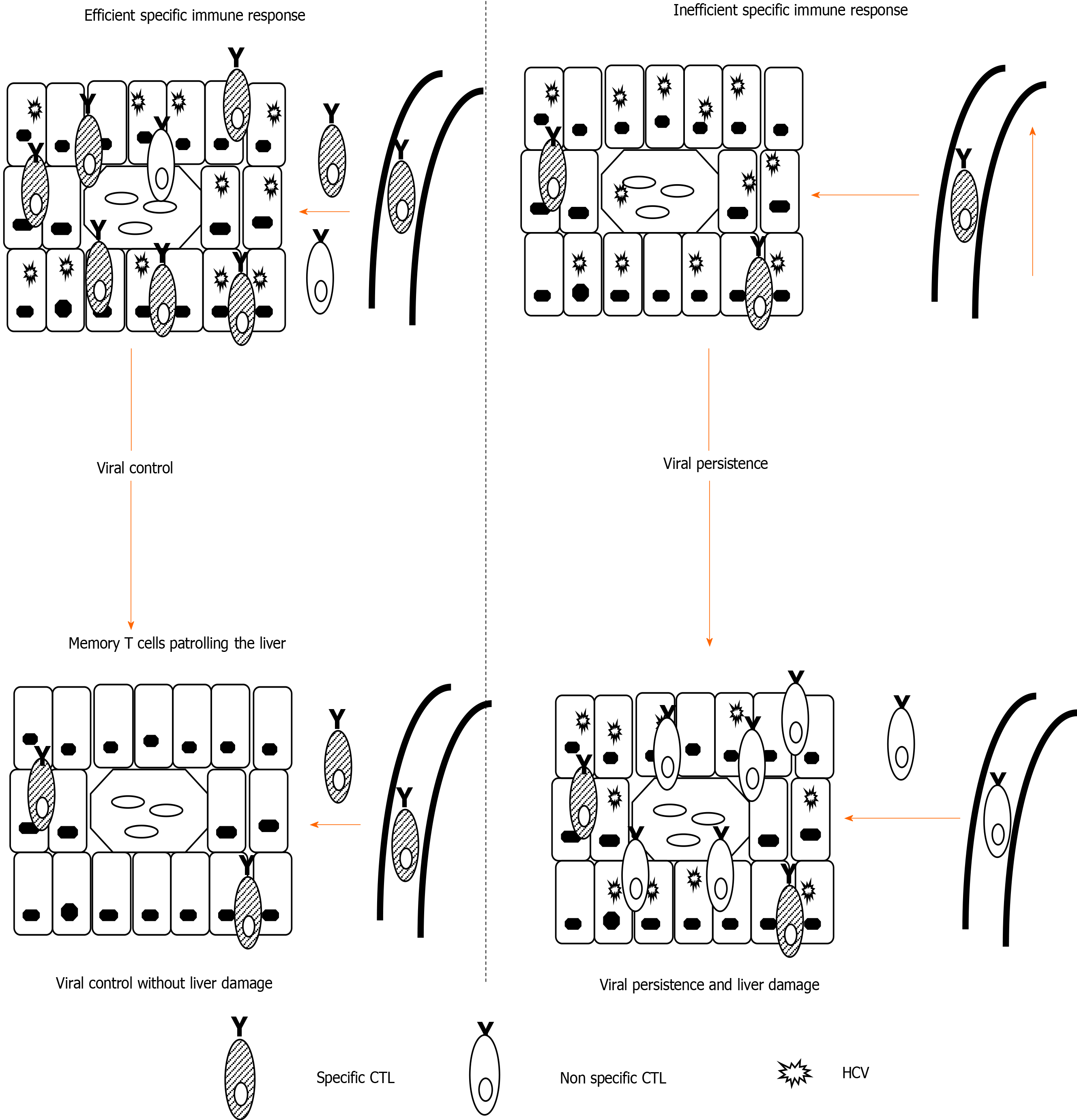Copyright
©The Author(s) 2020.
World J Hepatol. Oct 27, 2020; 12(10): 754-765
Published online Oct 27, 2020. doi: 10.4254/wjh.v12.i10.754
Published online Oct 27, 2020. doi: 10.4254/wjh.v12.i10.754
Figure 1 Theoretical model of liver damage during chronic viral hepatitis due to non-specific inflammatory infiltrate.
Left-side: Depiction of an efficient hepatitis C virus (HCV)-specific cytotoxic T cell (CTL) controlling HCV in the liver; Right-side: Depiction of HCV-specific exhausted CTLs unable to control HCV replication. Hepatocytes steadily secrete chemokines that attract specific and non-specific infiltrate, the latter of which is responsible for liver damage. CTL: Cytotoxic T cell; HCV: Hepatitis C virus.
- Citation: Peña-Asensio J, Sanz-de-Villalobos E, Miquel J, Larrubia JR. Tumor necrosis family receptor superfamily member 9/tumor necrosis factor receptor-associated factor 1 pathway on hepatitis C viral persistence and natural history. World J Hepatol 2020; 12(10): 754-765
- URL: https://www.wjgnet.com/1948-5182/full/v12/i10/754.htm
- DOI: https://dx.doi.org/10.4254/wjh.v12.i10.754









